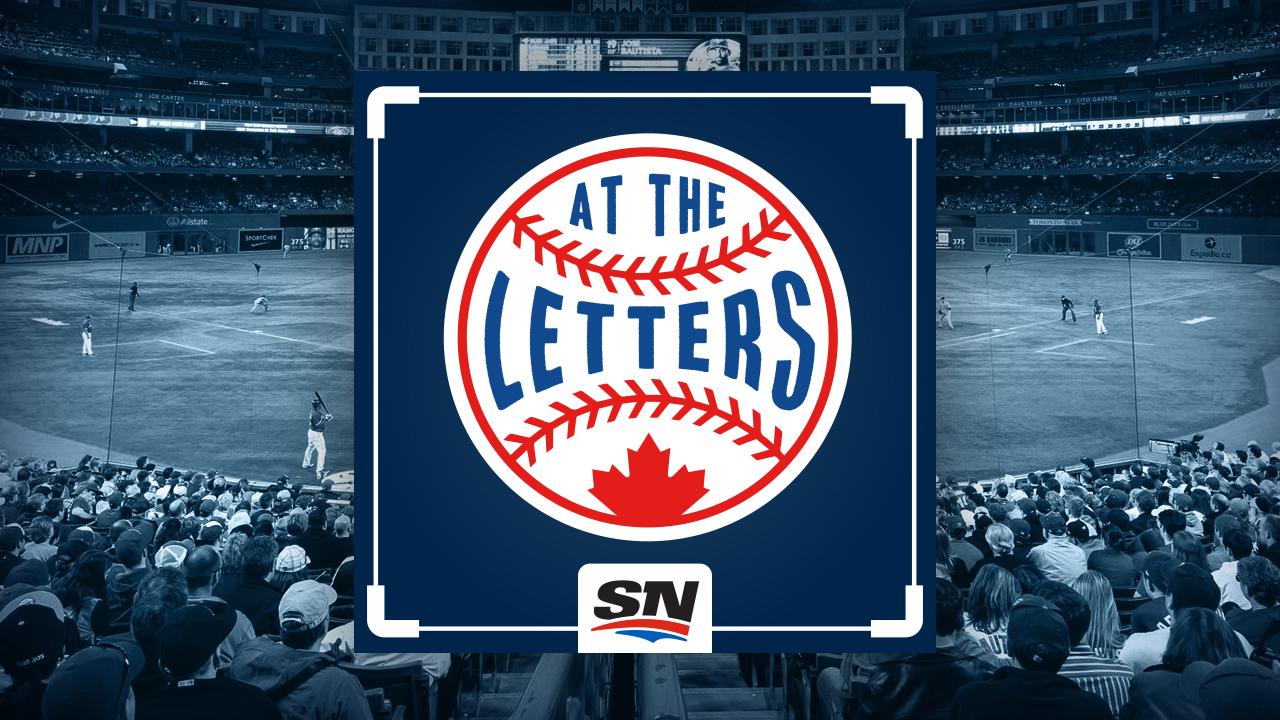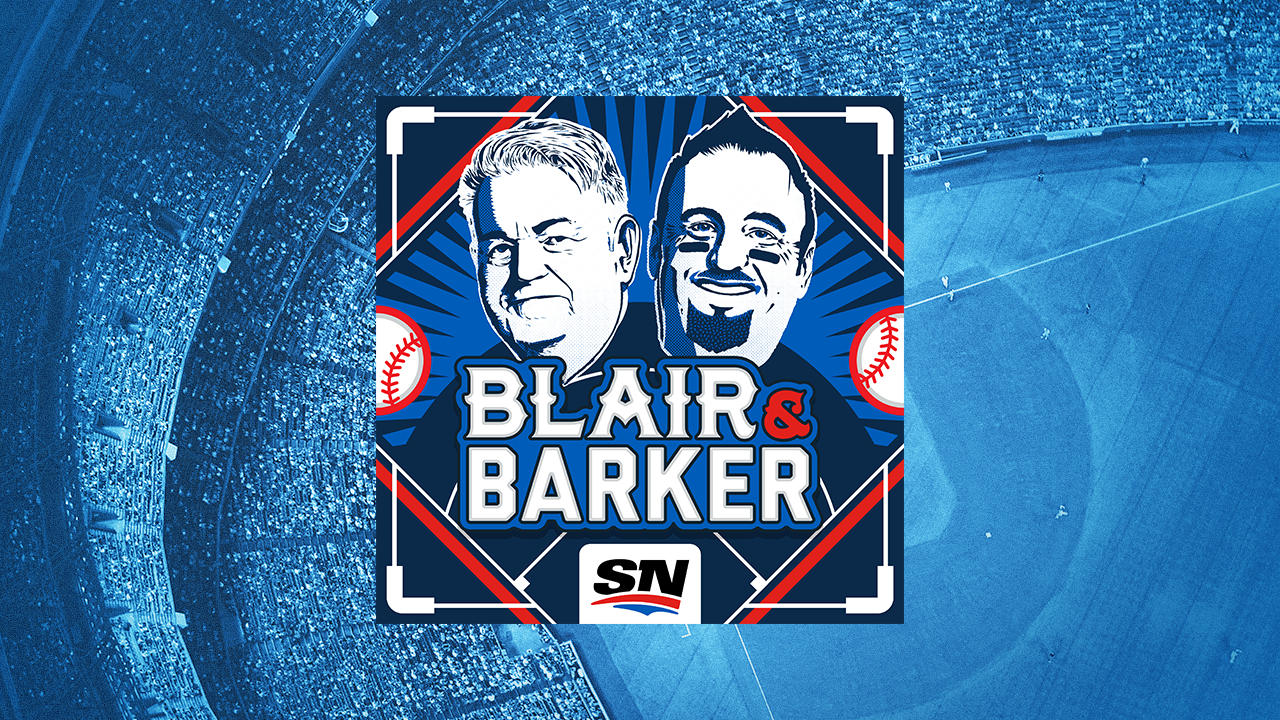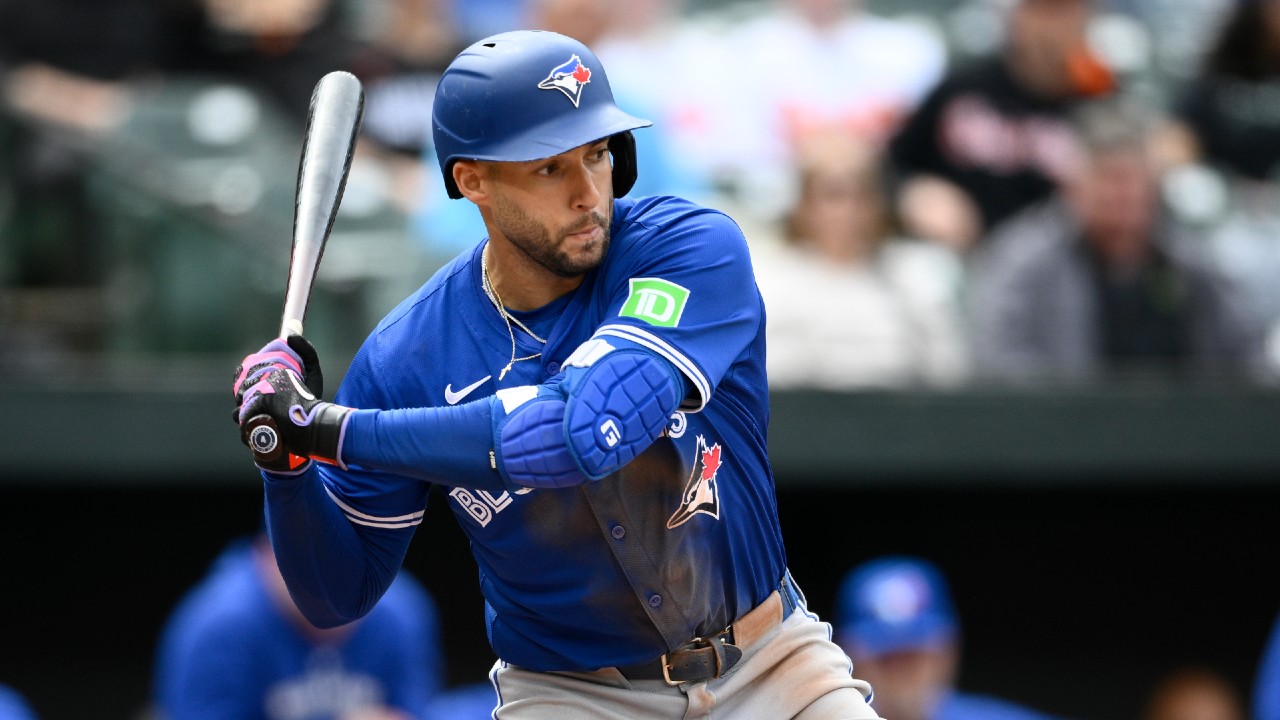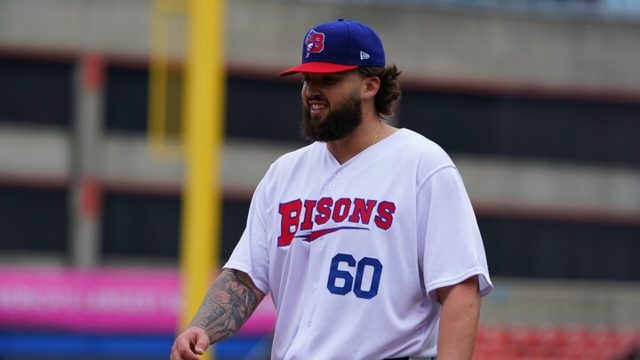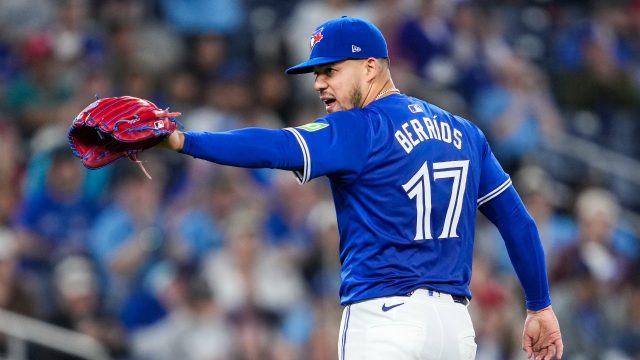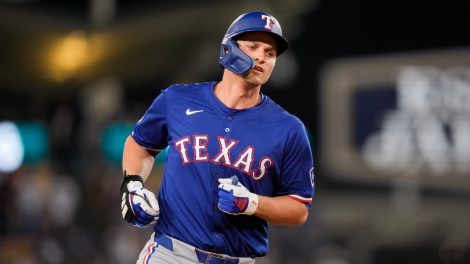TORONTO — Chris Bassitt didn’t become one of the most durable pitchers in the majors by chance. He took to heart a mantra he often heard from coaches in the Chicago White Sox system, a player’s best ability is availability, and those words took on a different meaning after he blew out his elbow chasing velocity with the Oakland Athletics in April 2016. In the years since, he’s focused on training for longevity rather than maxing out, and geared his approach on the mound toward hauling innings rather than blowing away hitters.
All of which has made the Toronto Blue Jays right-hander particularly interested in the discourse around the slate of severe pitching injuries to strike the game over the past couple of months, stars like Spencer Strider and Shane Bieber among them. Two weekends ago, the players union and Major League Baseball exchanged duelling statements on the matter, further polarizing a back-and-forth already ranging from thoughtful theorizing to easy-answer hot takes, with precious little of it productive.
“It makes me sick to watch the finger-pointing on why is all this happening, rather than everyone kind of taking the blame for themselves,” Bassitt, who starts Monday in the series opener versus the New York Yankees, says during an interview. “First and foremost, it is the players to blame for throwing the way that we’re trying to throw. But for people to think that it’s not the pitch clock, that’s completely wrong, it is the pitch clock. Training-wise, how people push training, it is that, too.
“This is a much bigger issue because it’s not a one-factor thing,” he continues. “It’s not like we take one thing away and this goes away. This is a cumulative problem. Say we have 10 weights we’re trying to hold. All of a sudden you take away one and it’s going to go away? That’s not the way it is. The way that guys train, how hard guys throw and then you shorten the time frame of how you want people to do it — it’s cumulative what’s causing all this.”
Such a holistic view of what’s ailing an industry in which the average fastball velocity has climbed from 92.5 to 94.1 m.p.h. over the past decade is sorely needed because throwing harder is a grassroots-to-big-leagues pursuit.
As Colorado Rockies right-hander Cal Quantrill, another pitcher to have had Tommy John surgery, put it: “Who gets the most outs as a 13-year-old? A lot of times it’s the guy who throws the hardest. Who gets the best scholarship and gets drafted the highest? We really like those kids that throw a hundred. So we’ve certainly incentivized velocity.”
The problem, as the native of Port Hope, Ont., points out, is that sport’s rewarding of hard throwers “is not necessarily for the wrong reasons.”
“Velo does help. In a lot of ways it can make you a better pitcher,” he continues. “These hitters are so good now, they see velo all the time. The velo it would take to just blow guys away has consistently gone up and up and up to the point where, if that’s all you’re chasing, you’re kind of limiting your upside. You’re going to have to have something else unless you can truly just come out and pop 101, 102. So I don’t know. I’m following this as interested as everyone else. I don’t really have an answer. The body can only take so much and I think we’re right on the edge of what’s possible.”
The recent arm count underlines that.
Atlanta announced over the weekend that Strider underwent surgery to repair the ulnar collateral ligament in his right elbow, ending his season. Along with Bieber, Guardians reliever Trevor Stephan, Boston’s Lucas Giolito, Marlins righty Eury Perez, Yankees reliever Jonathan Loaisiga and Oakland’s Trevor Gott are also among the pitchers to undergo Tommy John surgery in recent weeks.
Marlins ace Sandy Alcantara, Rays all-star Shane McClanahan all-star Orioles closer Felix Bautista, Dodgers starter Tony Gonsolin, White Sox closer Liam Hendriks and Pirates lefty Angel Perdomo also all had Tommy John surgery in the final two months of last season, with dozens of less severe injuries, too.
There’s personal cost to the pitchers and collective cost to their teams, who must reallocate those innings to other arms. Given how irreplaceable so many of those pitchers are — a club is lucky to find one Strider, let alone having a spare lying around — teams sometimes seek to optimize a few different arms trying to piece a starter together.
Over time, a steady stream of factors — better information on how starters fare a third-time through the order, the difficulty in developing starters, differing approaches to managing workload, more max-effort pitching to counter launch-angle hitting — have eroded the number of pitchers capable of hauling innings.
At 24, Strider was the youngest pitcher among the top 20 in innings pitched last season, finishing 18th with 186.2. Logan Webb of the San Francisco Giants led the majors with 216 innings at age 26, with Arizona’s 27-year-old Zac Gallen second at 210, followed by five pitchers 29 or older. Half of the top 30 in innings logged were 30 or older and that’s a massive looming problem for the industry when they age out given the current attrition.
“When all those older guys that basically so-called know how to pitch are gone and you’re got to make up all those innings, I don’t know where the industry thinks they’re going to make them up,” says Bassitt, who logged a career-best 200 innings last year. “It’s not even possible in our current climate. So I think we have a very big issue. If everyone doesn’t sit in the mirror and take blame, then it’s going to get a lot worse.”
The Blue Jays feature three of this decade’s most durable pitchers, with José Berríos fifth in innings pitched at 642.1, Kevin Gausman ninth at 620.2 and Bassitt 11th at 618. Berrios, at 30, is the youngest, followed by Gausman at 33 and Bassitt at 35.
For now, they are an incredible bedrock from which the Blue Jays can build a pitching staff, but the stops and starts for top prospect Ricky Tiedemann, the careful handling of Yariel Rodriguez, the status of 2022 first-rounder Brandon Barriera (who is awaiting a second opinion on the severity of his recent elbow injury) underlines how difficult developing the next generation will be, for them and others.
Especially since pitching isn’t getting any easier.
Quantrill, who like Bassitt is among the most thoughtful players in the game, blew out his elbow during his sophomore season at Stanford “because I threw a lot of innings and I was undersized and I was pressing, pressing, pressing to get better and better,” he says. “I don’t really regret how I did it. That’s what I thought it was going to take to be a great college pitcher and get drafted where I wanted to get drafted.”
The San Diego Padres selected him eighth overall in 2016 and he debuted there before establishing himself with Cleveland, logging 585.2 big-league innings since 2019. With a fastball that sits 93 (a 35th percentile number in the majors) he’s heard arguments about managing effort levels over the course of the game, but doesn’t think that’s feasible for the vast majority of pitchers in the sport.
“There are times in games where I’ll push the pedal down a little harder or let it off, but it’s not really a health decision, it’s more of a pitch decision,” he explains. “Like, could a 90-m.p.h. sinker be better than a 94-m.p.h. sinker? Is the slow cutter better than the hard cutter? Unfortunately, I’m just not good enough to take 10 per cent off everything and think it’s going to work. I pretty much send everything as hard as I can at all times. There are times where execution is more important than velo. But to stay relevant and to continue to get outs at the level you want to get outs at, it takes just about everything you’ve got.
“That’s just where our game is at,” Quantrill continues. “We’re all pressing to be as freaky as we can be, spin the ball as hard as we can and continue to have jobs and compete and get wins. We’re going to have to find balance in a game of when you need to press, when you need to pull back. I think we all are trying to find that balance.”
That’s what makes Bassitt such an outlier, perhaps an example for teams to emulate in their player development rather than trying to mass-produce short-stint power arms.
After his elbow reconstruction, he understood that his chase for more velocity would simply chew up his arm again, so he adapted his approach. He throttled his heater. He leveraged a repertoire of eight pitches more effectively. He varied arm angles to further complicate a hitter’s approach against him. And he tailored his training to prepare “for a marathon” while so many other pitchers in the sport “are training for sprint.”
“Nothing I do, training-wise, is to throw really hard. Everything I do is to make sure my body is in the right spot so I can throw 120 pitches in a game if my team needs it,” Bassitt says. “If you gave me two, three weeks, there’s not a doubt in my mind I can hit 97. Not a doubt. I don’t want to train for that. I want to train to try to throw 200 innings a season. I know when the season comes winding down, our bullpen is better because of me, our starters are fresher because of the innings I can throw. I think long term over short term.”
Ultimately, addressing what could easily become, if it’s not already, a pitching crisis with strategic, long-term thinking is an industry-wide imperative. Science and tech is helping everyone find a pathway to nastier and nastier pitches, with ways to help the arm recover lagging behind. And a challenge is that stuff both plays and pays, which motivates teams to push their pitchers and pitchers to push themselves, perhaps necessitating a rethink of how the sport rewards big velocity.
“Not all outs are worth the same amount of money and that’s just the truth,” says Quantrill. “It’s pretty easy to see what it’s done on the hitting side. We like homers a lot and we’re willing to strike out a little bit to get them. Those guys continue to get the biggest contracts and that’s good. Homers are fun. People love them and it makes a huge impact on a game. But I think you’re seeing, even on the hitting side, a little bit of bounce back now to like, there’s nothing wrong with being a .300 hitter with some pop. That works, too. We’re going to find that balance on the pitching side.”
Bassitt, who signed a $63-million, three-year deal with the Blue Jays as a free agent two winters ago, agrees. He’s seen examples of that balance and believe their approach offers a path forward.
“There’s no doubt that if you throw harder, you have nastier stuff, you’re going to get paid more, more teams are willing to take more risk on you,” he says. “People will see a fastball at 93 and say if he loses two miles an hour, now he’s, 89-91, we don’t like that, compared to if you were throwing 97, you lose two miles an hour, you’re now 95, that’s not a big deal. But again, availability.
“I was blessed enough to come up with Chris Sale sitting there and throwing 90-92 through four innings and all of a sudden he’s throwing 97-98 one inning, and then he’s back to 90-92. José Quintana was doing a similar thing, basically throttling his fastball. You saw Justin Verlander and Max Scherzer do it forever. Gerrit Cole obviously does a really good job of it, too. They’re not max-efforting their fastball every time. They’re sitting there commanding the zone, throwing to spots with the fastball and then have the ability to throw it hard. To me showing stuff is great, but I think holding stuff for 100 pitches is even more awesome.”

